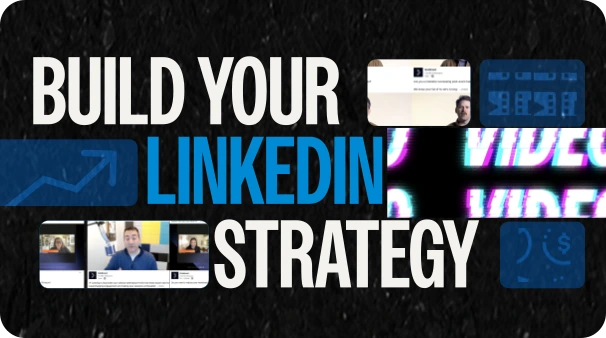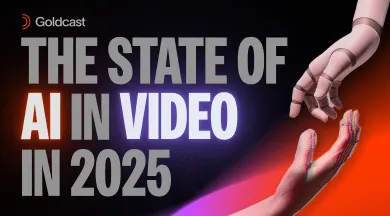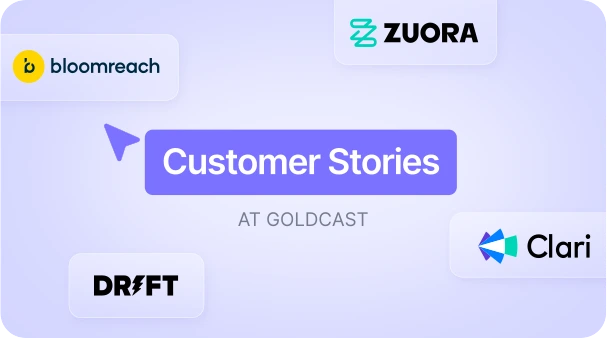Letting Customer Stories Shine, Breaking Into New Markets, and Sales Contests that Work

Table of Contents
Maximize Your Marketing ROI
Join 10,000 other marketers already getting the best tips on running engaging events that boost pipeline and create raving fans.
It's not every day that we get to talk to two marketers who have a shared work history, so we were excited to hear from Susan Moore and Darlene Smith at the last Event Marketers Live.
Susan Moore is a marketing consultant who leads with the customer first in everything she does. She's worked with companies like Microsoft, Taleo (where she worked with Darlene!), Oracle, Tableau, and more.
Darlene Smith has now been at Guidewire Software for 11 years; as Senior Director of Events, she's responsible for many events, namely the company's global annual Guidewire Connections user conference, which is now in its 19th year.
Here's what we talked about:
- Focus on your flight path
- How to work with customer stories—and stay on a timeline
- How to break into new markets without existing data
- Motivate your sales team with contests
- Event budgeting, follow-up, and AI assistance: Frequently asked questions (FAQs)
You can catch up on the full replay below and be sure to visit Event Marketers Club, our award-winning community! Lately we've been talking about who's hiring, virtual networking opportunities, CE credits, and more.
Focus on your flight path
Susan hails from a family of aviators, and one of her productivity hacks is to think of your work as a flight path. While you can inevitably course correct when needed, you should break down each project into weekly milestones and always focus on the three things you can achieve each week that align with your desired outcome.
When you think of a project from this flight path POV, the factors that affect your project are analogous to things that affect flights—think: altitude, speed, headwinds, tailwinds. Those are absolutely natural during any trip, and they should be taken into account during your planning.
For example, for event marketers, the top headwind is typically budget, and so you'll need to factor in how to get where you're going with what your budget will allow you to do. (For more deets on this, be sure to read through the FAQs at the end.)
This is an especially timely tip, given that we're about to be exactly halfway through the year. It's the perfect time to check back in with your annual and quarterly goals and measure where you are now and determine if you need to change any of your weekly North Star priorities.
How to work with customer stories—and stay on a timeline
Putting together a huge conference like Guidewire Connections takes a lot of help from the customer marketing team and the customers themselves, but the results are worth it.

Darlene works very closely with her customer marketing team to put together a list of top customers and keep them on the marketing team's radar. They're looking for dynamic, powerful speakers who can share their stories and positive experiences with Guidewire.
Once the teams agree on which customers are the best to partner with, Darlene's team manages the rest of the process with the actual customer. They set up a call with Guidewire's CMO and get designers involved to make sure the resulting presentation is engaging and on brand.
That all sounds simple and straightforward, right? But in reality, we know that keeping customers (or anyone!) on a timeline is much easier said than done. If you're wondering how to keep your customers responsive and organized during the process, check out Darlene's best advice:
Of course you can't plan for everything, but setting specific deadlines very clearly up front will go a long way. You will also have to follow up; yes, it can be frustrating, but it just goes with the territory. Make friends with admin folks who can get you the answers you need when the execs are too busy, and don't let anyone drop the ball!
How to break into new markets without existing data
Our panel answered a great question from a marketer who wrote in asking for advice on how to break into a new market in Latin America through regional field marketing and events—specifically, a market the company doesn't have any historical data on.
If you find yourself in this position, start with your sales organization. They should know at least something about that new audience and what will resonate with them. Perhaps you'll learn that this market loves sporting events, so you need to brush up on your soccer knowledge and book some tickets. Or maybe a casual happy hour is more the local speed.
You'll definitely want to do your own research on the nuances and cultural sensitivities of the region you're entering. You'll want to know, for example, that in Latin America people often eat dinner later than they do in America. That way, you don't schedule an early morning power breakfast for that audience and wonder why no one shows up.
When you're starting out without data to lean on, it's all going to be somewhat of an experiment. Partner with your sales team and brainstorm what you can try first. Once you try a few things, you do have data to work with, and you can try something else based on what you've learned.
Going back to customer stories, if you can find a customer in that area who's willing to go meet with people, even better. Your customer will likely already be familiar with the local culture and how people do business there. If you identify such a superuser, talk with them to develop their customer story and be sure to develop it around what will resonate most with other people in that geographic area.
One other note here: If you do have a customer in another region, it's a good idea to record their story in their native language and translate afterward for other audiences. Darlene and Susan have found that requiring customers to speak English when they're not native speakers can limit the story and take away speaker emphasis. Let your customer's story sparkle as much as possible!
Motivate your sales team with contests
News flash (to no one): Sales is competitive!
Try using that to your advantage, perhaps with weekly reports showing how registration is stacking up for each individual contributor. How many people or companies has each person signed up? Make it easy to track by giving salespeople traceable URLs and ready-to-go sales materials.
Another fun idea is to time your contests to seasonal events like March Madness:
A lot of people in sales have a sports background and will respond well to sports-related themes. Whatever you do, try to make it something that your sales team will find personal, meaningful, and relevant. As Susan points out, the sky's the limit.
Event budgeting, follow-up, and AI assistance: Frequently asked questions (FAQs)
Q: When asked to do more with less, how do you know what to cut to meet your goals but keep your event standards?
A: Meet with your leadership team and get clear on what the objectives are. What does success look like for this particular project or event?
From there, discuss what you can cut back on and still achieve the final outcome. Where can you reduce quality but still have a good result? Can you eliminate swag or speaker gifts for this event? Can you host the event virtually and save on venue costs?
Going back to Susan's flight path analogy, the most expensive plane in the world and a cheaper model can still get you to the same destination—one might just be faster and more comfortable. However, they both get you where you're trying to go, which ultimately is what matters.
Q: Marketing is usually responsible for registration and the event experience, but the ROI really comes from follow-up. How do you make sure sales follows up with leads after an event?
A: Let's use a trade show as an example. Before the event happens, tee up your messaging so that whoever's working at your booth already knows who the hot leads and key decision makers are. That way, they can take notes on the account when they talk to them and add that in, making the follow-up messaging even more personalized.
Ideally, within 24 hours a follow-up message is going out—one that includes that personal touch we just mentioned. You can also follow up with another email about the event content.
Susan does a "post-mortem" a week after the event to find out what worked and didn't work for the event; she also checks on the queue to see if there's anyone who didn't receive a follow-up. Messages have to go out within 1-2 days of an event to work well—the more immediate, the better.
Q: Should you follow up right after the event or on the Monday afterward? What if it's a multi-day event and prospects are still at the conference?
A: It depends on what type of event it is. It's totally okay to follow up during a trade show; that email just might be the thing that reminds someone to talk to their colleague and ask them to stop by your booth. You don't want to miss out on that opportunity.
In general, though, following up within 1-2 days is best. If an event runs a few days and ends on Friday, the Monday after works just fine.
Q: How can AI help with events and, in particular, virtual and hybrid events?
A: There's endless potential when it comes to AI helping event marketers do their work. You can try AI-generated illustrations to promote your event. You can use ChatGPT to brainstorm ideas, keeping in mind that AI should always be used as a starting point—it will always require a human touch afterward.
AI really shines when it comes to post-event content creation. After an event, there's so much content that it can be a pain to go through it manually. According to our research, it takes the average marketer 4-5 replays of a webinar to find the key moments they want to capture. Because most webinars are an hour long, that adds up fast.
With AI tools like Goldcast Content Lab, you can automate all of that. Simply upload a video (or, if you run your event on Goldcast, skip this step!), and watch Content Lab automatically transcribe your event and produce video snippets, SEO-driven blog posts, FAQ lists, email follow-ups, and so much more.
Want to try Content Lab for yourself? We're offering a free 14-day trial! Sign up below.

Stay In Touch
Platform
Resources
Company
Community
© 2025 Copyright Goldcast, Inc. All rights reserved.



 Upcoming Events
Upcoming Events Event Series
Event Series On-Demand Events
On-Demand Events

